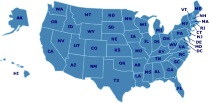Language Arts Curricula
Resources
Reading Made Easy
First Language Lessons Level 2
This is book 2 in the First Language Lessons series. It offers scripted lessons to teach copywork, narration, picture study, and other classical techniques to help develop the student's language ability.
Sing, Spell, Read & Write
Create! Press
Noah Webster's Reading Handbook
Explode The Code
Bob Books
English from the Roots Up
Writing Strands & Reading Strands
Montessori Reading
Featured Resources
As an Amazon Associate, we earn from qualifying purchases. We get commissions for purchases made through links on this site.



